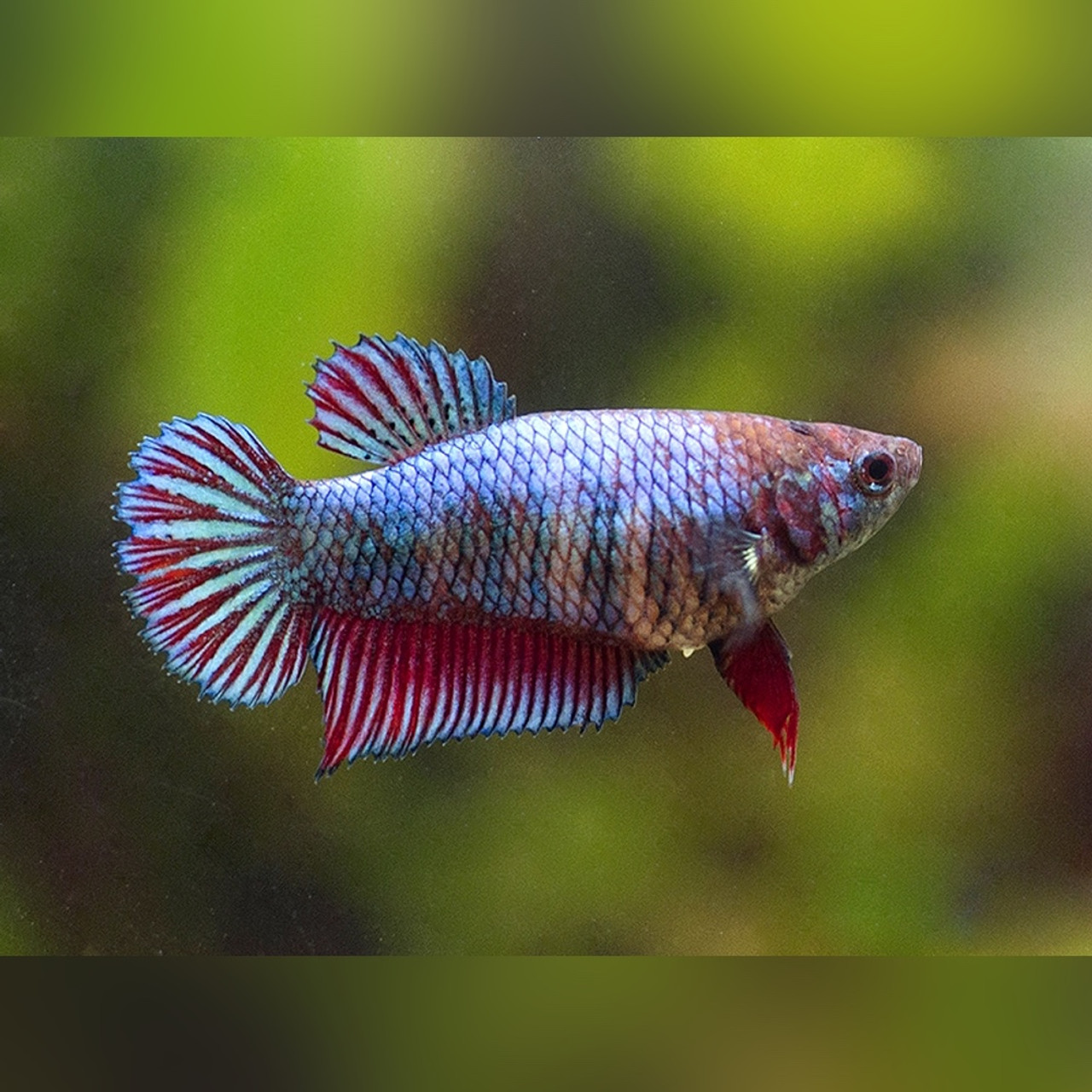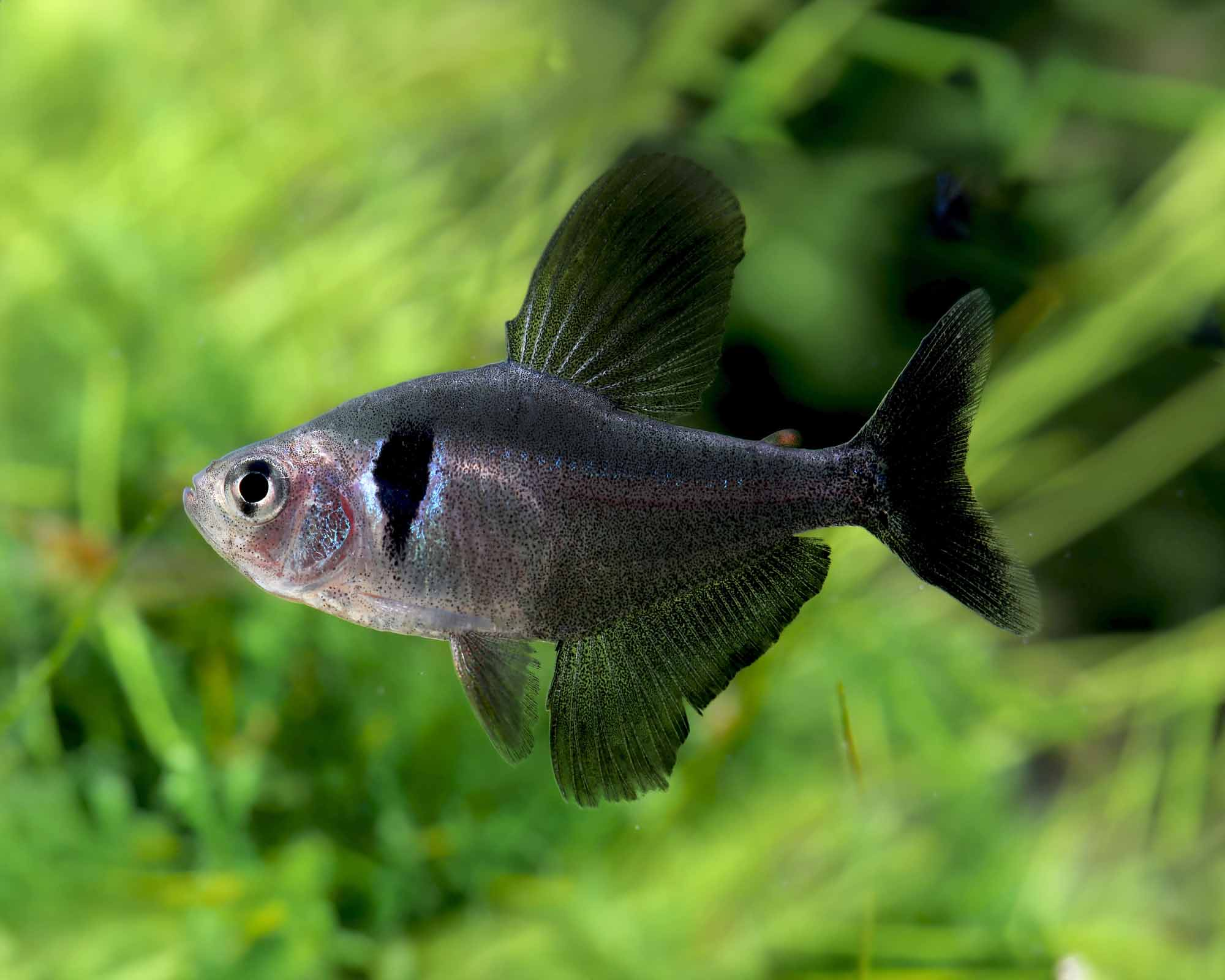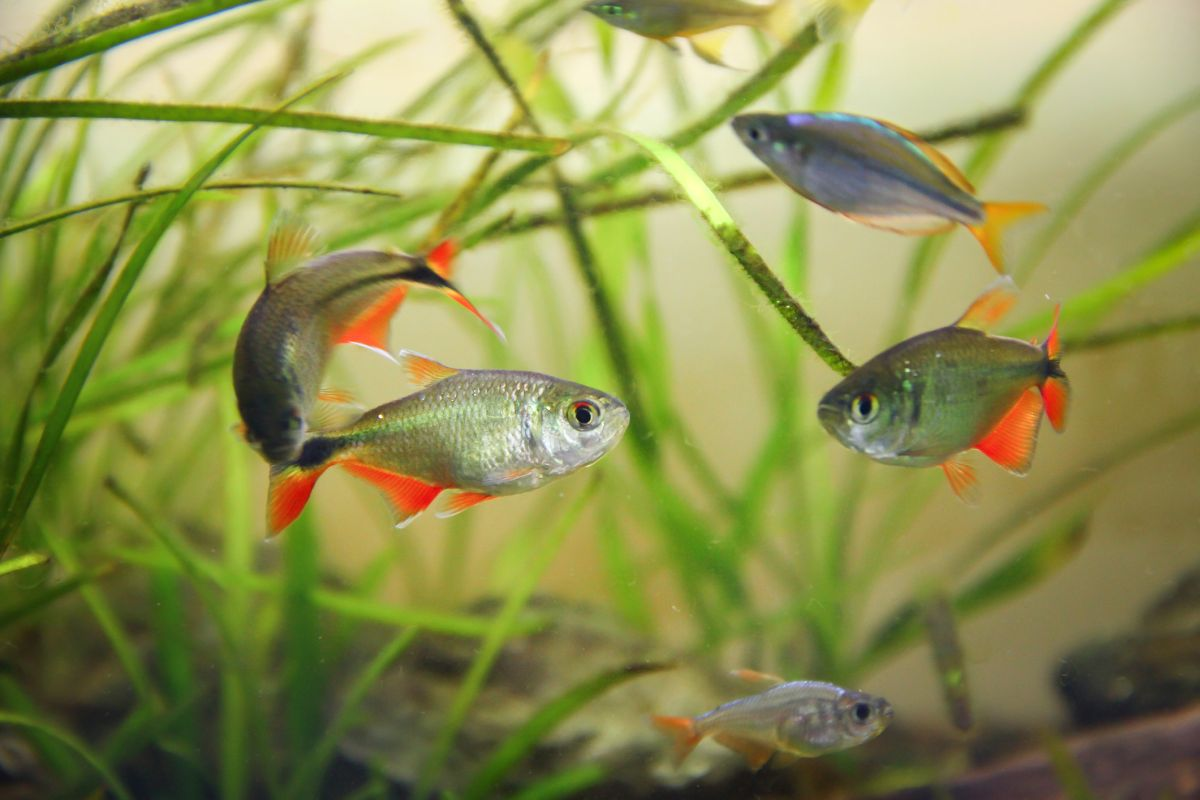The Aulonocara stuartgranti “Ngara/Mdoka”, also known as the Ngara Flametail or Mdoka Peacock, is a stunning peacock cichlid endemic to Lake Malawi. Known for its vibrant coloration and relatively peaceful demeanor, it is a popular choice for hobbyists who enjoy the beauty of African cichlids without overly aggressive behavior.
Quick Facts
- Scientific Name: Aulonocara stuartgranti “Ngara/Mdoka”
- Common Names: Ngara Flametail, Mdoka Peacock
- Natural Habitat: Northeastern Lake Malawi (Mdoka, near Ngara)
- Maximum Size: 4–5 inches (10–12 cm)
- Diet: Omnivorous
- Temperament: Peaceful to semi-aggressive
- Minimum Tank Size: 36 inches (90 cm) species tank or larger community tank
Appearance
- Males:
- Exhibit vibrant metallic blue body coloration with a white-edged dorsal fin.
- Yellow “squiggle” patterns on the caudal fin.
- Depending on mood, dark vertical bars may appear.
- Pelvic fins can display a yellowish hue with a striking white edge.
- Females:
- More subdued in appearance with beige to grayish coloration and faint vertical bars.
Tank Setup
- Tank Size:
- Minimum 36 inches (90 cm) for a species-only tank.
- A larger community tank is recommended when keeping groups with other peaceful Malawian haps.
- Substrate & Décor:
- Sandy substrate to mimic their natural lakebed.
- Include rock formations for shelter and territories.
- Leave open swimming spaces for their active nature.
- Water Parameters:
- pH: 7.8–8.6 (alkaline)
- Hardness: Hard water preferred.
- Temperature: 24–27°C (75–81°F)
- Filtration:
- Maintain excellent water quality with efficient filtration.
- Perform regular water changes (25–50% weekly) to avoid poor water conditions.
Behavior and Compatibility
- Temperament:
- Generally peaceful but can become territorial, especially males during breeding.
- Suitable for community tanks with similarly tempered cichlids.
- Tankmates:
- Pair with peaceful to moderately aggressive Malawian haps or placid mbuna (e.g., Labidochromis caeruleus or Pseudotropheus demasoni).
- Avoid keeping with overly aggressive species or other Aulonocara varieties to prevent interbreeding.
- Social Structure:
- Best kept with a single dominant male and multiple females (1 male: 3–5 females).
Diet
- Natural Feeding: In the wild, they sift through the substrate for small invertebrates and other organic matter.
- Captive Diet:
- High-quality cichlid flakes or pellets.
- Supplement with frozen or live foods, such as brine shrimp, cyclops, or daphnia.
- Occasional vegetable matter like spirulina-based flakes for balance.
- Feeding Schedule: 2–3 small feedings daily to prevent overfeeding and maintain water quality.
Breeding
- Reproductive Behavior:
- Maternal mouthbrooder: females incubate eggs and fry in their mouths for 2–3 weeks.
- Spawning occurs on flat rocks or sandy areas.
- Tips for Breeding:
- Provide a ratio of one male to multiple females to reduce stress on individual females.
- A separate breeding tank can increase fry survival rates.
- Raising Fry:
- Once released, fry can be fed finely crushed flakes, Artemia nauplii, or frozen cyclops.
Special Notes
- Interbreeding Risk: Avoid mixing with other Aulonocara species to preserve pure genetic lines.
- Stress Indicators: Faded colors or hiding behavior can indicate stress due to poor water quality or aggressive tankmates.
Conclusion
The Aulonocara stuartgranti “Ngara/Mdoka” is a magnificent addition to any aquarium, bringing vibrant coloration and engaging behavior. With proper care, a spacious tank, and compatible tankmates, this peacock cichlid will thrive and become a stunning focal point in your aquatic community.




Reviews
There are no reviews yet.